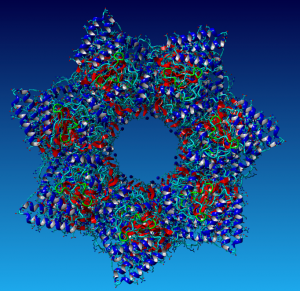
What do honey bees and staghorn ferns have in common? At first glance, not a lot. Yet they are both ‘eusocial’ organisms. They live in colonies where different individuals performing separate tasks contribute to the overall viability of the co-operative. They are both superb examples of the immense complexity of the biological world and beautifully illustrate how the functional convergence of bees and ferns could depend on similar principles. Honey bees convey information chemically (by pheromones) and by elaborate ritual (the ‘waggle’ dance). Likely staghorn ferns in a colony also communicate chemically or possibly also by more intimate contacts. We don’t yet know these details but the parallels to human ‘colonies’ are striking.

Complexity is all about the evolution of the possible. Planning a simple account of the physical properties of DNA I soon realised that that the concepts of DNA as an informational codescript, the nature of information itself and the rise of biological complexity are intextricably intertwined. The final incarnation is very far from the book I’d initially conceived but is an amalgam of an intellectual journey that took me to places of whose existence I was previously unaware.
The heroes of the story are many and disparate – a French botanist, Lamarck, who espoused the principle of evolution; an Austrian physicist, Boltzmann, who appreciated the link between energy and evolution; of course Darwin, whose idea of natural selection is fundamental to all evolutionary theory and Schrödinger, another physicist who realised that biological information is encoded in a ‘script’, the nature of which was famously uncovered by Crick and Watson. Yet there are other less appreciated but equally profound contributions. The theory of probability logic propounded by an eighteenth century Presbyterian minister, Thomas Bayes, ensures that an evolutionary trajectory is directional (but only directed by chance). Another player was John Stevens Henslow, the founder of the current Cambridge University Botanic Garden, who instilled into Darwin the importance of botanical variation. And yet another botanist, Augustin de Candolle, whose concept of ‘Nature’s wars’ provided a crucial stepping stone in Darwin’s development of the then theory of natural selection. Darwin himself wrote ‘De Candolle, in an eloquent passage, has declared that all nature is at war, one organism with another, or with external nature… It is the doctrine of Malthus applied in most cases with ten-fold force’.[1]
Yet ‘Nature’s wars’ are not the sole preserve of the natural world. They have long spilled over into the discussion of evolutionary theory. Since the legendary confrontation between Thomas Huxley and William Wilberforce – ably assisted by his zoologist coach, Richard Owen – most protagonists in these debates have been zoologists (and male….) and consequently the discussions have centred on adaptation to the mobility of animals, rather than to the sessile lifestyle of plants. Lamarck, who trained as a botanist and in France is rightly revered as ‘le fondateur de la doctrine de l’évolution’ [2], was a notable exception. It was his tragedy that he should have chosen an animal – a giraffe – to illustrate his preferred mechanism of adaptation. Had he chosen a plant his concept would not necessarily have been arguably rejected with such absolute finality – it is a ‘universally admitted fact that the ‘Lamarckism’ theory is false [3]’.
But where to next? Complexity, information and evolution also apply to cosmology and to our ultimate understanding of physical laws – they are all part of a whole. For example, is the evolutionary fate of our chiral universe to expand forever or does it periodically ‘bounce’? And if it bounces what does that tell us about the Second Law of Thermodynamics?
Yet I hope that ultimately the message of the book is very simple, or maybe possibly even simplistic. ‘Complexity, especially biological complexity, depends on available information and available information depends on available energy’ – with the emphasis on available.
Quotes:
[1] Darwin, C. (1842) Essays of 1842 and 1844.
http://darwin-online.org.uk/converted/pdf/1909_Foundations_F1556.pdf
[2] Inscription below the plinth of Lamarck’s statue in Le Jardin des Plantes, Paris.
[3] Dawkins, R. (1976) The selfish gene. Oxford University Press
Title: Why DNA?
Author: Andrew Travers
Paperback ISBN: 9781107697522
Hardback ISBN: 9781107056398
Latest Comments
Have your say!